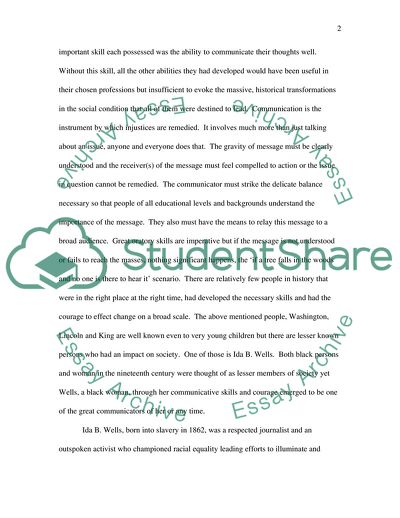Cite this document
(Ida B Wells, a Great Communicator Essay Example | Topics and Well Written Essays - 2250 words, n.d.)
Ida B Wells, a Great Communicator Essay Example | Topics and Well Written Essays - 2250 words. Retrieved from https://studentshare.org/biographies/1709410-great-communicator
Ida B Wells, a Great Communicator Essay Example | Topics and Well Written Essays - 2250 words. Retrieved from https://studentshare.org/biographies/1709410-great-communicator
(Ida B Wells, a Great Communicator Essay Example | Topics and Well Written Essays - 2250 Words)
Ida B Wells, a Great Communicator Essay Example | Topics and Well Written Essays - 2250 Words. https://studentshare.org/biographies/1709410-great-communicator.
Ida B Wells, a Great Communicator Essay Example | Topics and Well Written Essays - 2250 Words. https://studentshare.org/biographies/1709410-great-communicator.
“Ida B Wells, a Great Communicator Essay Example | Topics and Well Written Essays - 2250 Words”. https://studentshare.org/biographies/1709410-great-communicator.


